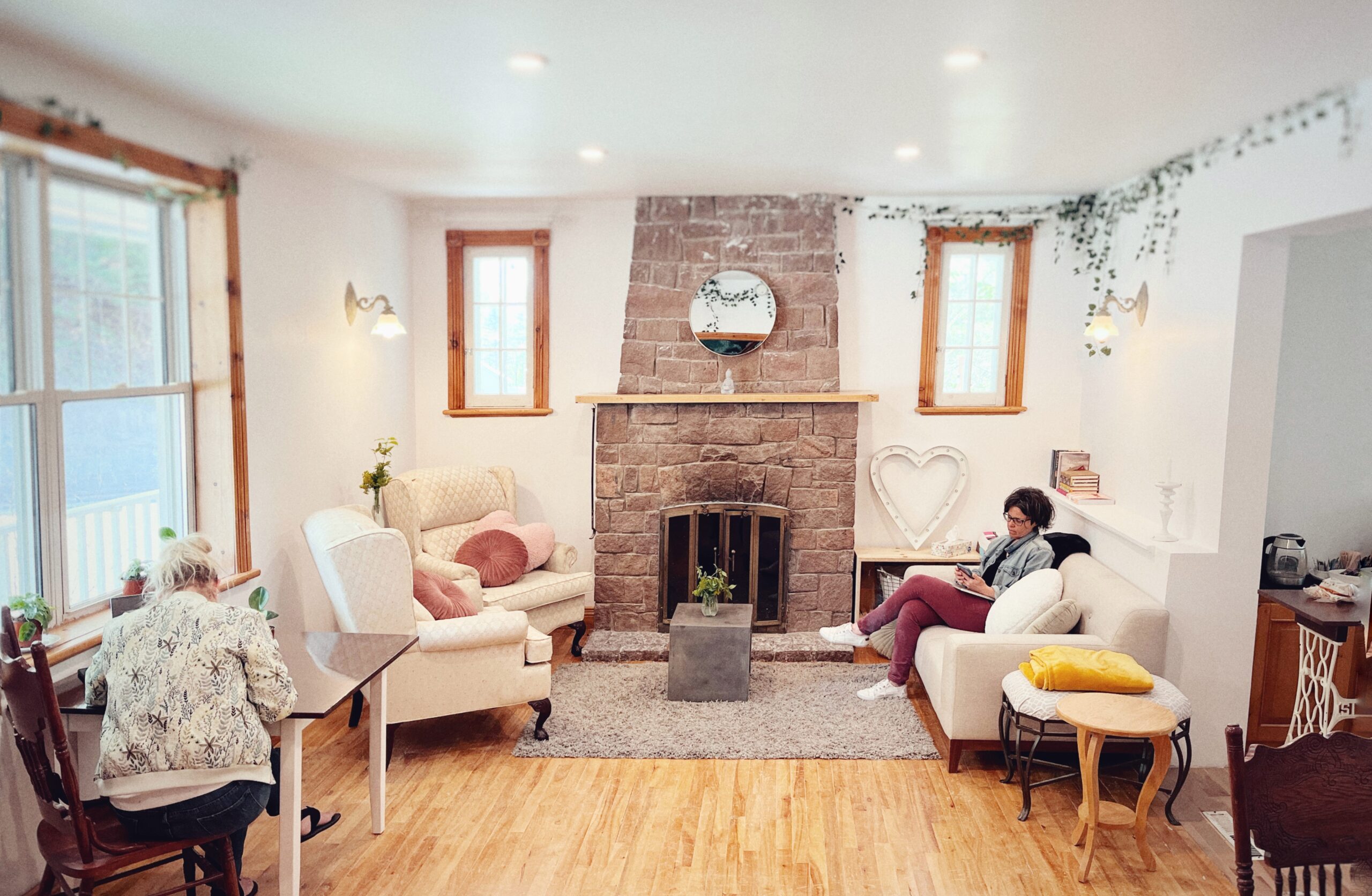À PROPOS
L’Auberge de la Gare
Bienvenue À L’Auberge de la Gare, un lieu incontournable pour un séjour touristique spontané ou planifié autant en couple qu’en groupe ou en famille. Pour les professionnels, les artistes en quête d’inspiration ou les amateurs de plein air, vous êtes directement au KM 33 du P’tit Train du Nord!
Welcome to L’Auberge de la Gare, an essential place for a spontaneous or planned tourist stay as a couple, group or family. For professionals, artists looking for inspiration or outdoor enthusiasts, you are directly at KM 33 of the P’tit Train du Nord!



VOS ÉVÉNEMENTS
L’Auberge de la Gare est le lieu idéal pour toutes sortes de réunions, fêtes, retraites santé mieux-être, retraites corporatives, intensifs, résidences d’artistes, team building, ateliers, conférences ou tous types de rassemblements avec une capacité d’une vingtaine de personnes en chambres privées, partagés ou dortoir. On s’adapte selon les besoins!
The Auberge de la Gare is the ideal place for all kinds of meetings, parties, health and well-being retreats, corporate retreats, team buildings, or gatherings with a capacity around twenty people in single, shared or dormitory if needed. We’re adaptable!

LES ATTRAITS DE LA RÉGION
À DÉCOUVRIR !
Vivez une expérience et un moment de connexion à vous au coeur des montagnes des Laurentides, un paradis du plein air pour tous les aimants de la nature qui souhaitent vivre des moments inoubliables que ce soit en randonnées à vélo, à pied, en raquettes ou en ski de fond, l’été comme l’hiver! Sans oublier les amateurs de ski alpin, de vélo de montagne et de planche à neige qui peuvent vivre leur passion au Chantecler ou encore sur tous les monts environnant des villages de Piedmont, Saint-Sauveur et Morin-Heights (Sommet Avila, Saint-Sauveur, Gabriel, Olympia, Morin-Heights)! En terme de tourisme, il y a des activités pour tous les goûts et tous les styles dans cette belle région du Québec! Êtes-vous prêt à vivre un séjour mémorable à l’Auberge de la Gare? Nous serons ravis de vous servir et vous faire vivre une expérience unique dans notre lieu rempli d’histoires, de sourires et de joie à l’arrêt Marguerite-Station, un incontournable!
Nos Séjours

SÉJOUR PLEIN AIR
Le séjour plein air vous offre un endroit paisible adjacent à la piste cyclable du petit train du Nord. Arrêtez-vous dans un endroit de détente pour recharger vos batteries en appréciant la terrasse extérieure, un breuvage et si besoin, utilisez l’emplacement de storage pour votre vélo et servez-vous des quelques outils (pompe à vélo, jeu de clés etc.) mis à votre disposition.

SÉJOUR FOCUS
Le séjour focus vous offre un lieu favorable à la concentration et au bien-être. Profitez d’un espace de travail adapté aux besoins technologiques qui vous sera réservé le temps de votre visite, et si besoin, servez-vous du matériel de bureau mis à votre disposition. Vous souhaitez travailler en co-working avec une ou plusieurs personnes? Vous pourrez séjourner dans une chambre partagée si vous le souhaitez.

SÉJOUR CRÉATIF
Le séjour créatif vous offre un environnement inspirant et bénéfique pour connecter avec l’artiste en vous. Bénéficiez d’une place appropriée pour amorcer votre élan créatif qui vous sera réservé le temps de votre visite et si besoin, empruntez un chevalet et tout le matériel artistique nécessaire disponible pour vous laisser aller. Vous souhaitez créer avec un ou plusieurs artistes? Vous pourrez séjourner dans une chambre partagée si vous le souhaitez.
Une jolie chambre à l’Auberge
Nos sept chambres sont toutes munies d’une salle de bain privée avec douche mis à part la Val-David qui a une salle de bain attenante avec un bain sur pattes et douche. Nous avons aussi deux appartements complets de deux chambres. Pour plus de détails sur nos chambres ou pour réserver une chambre en particulier, contactez-nous!

